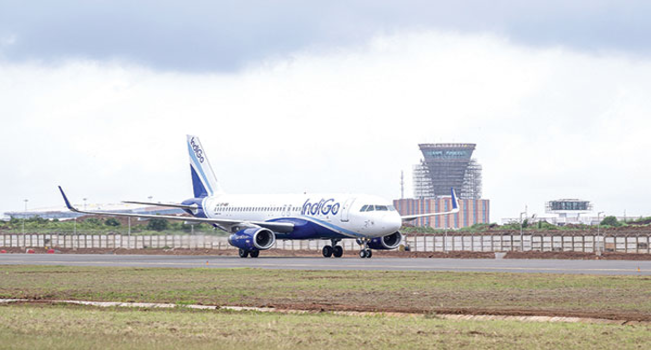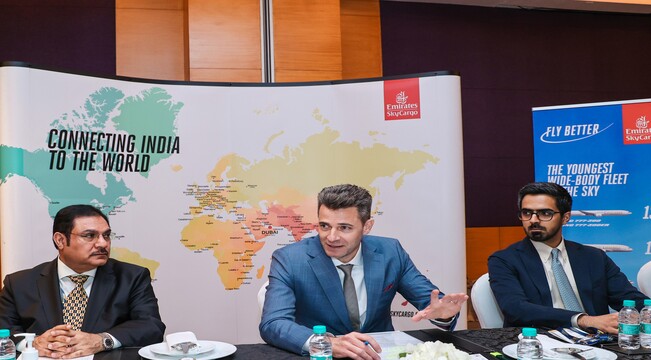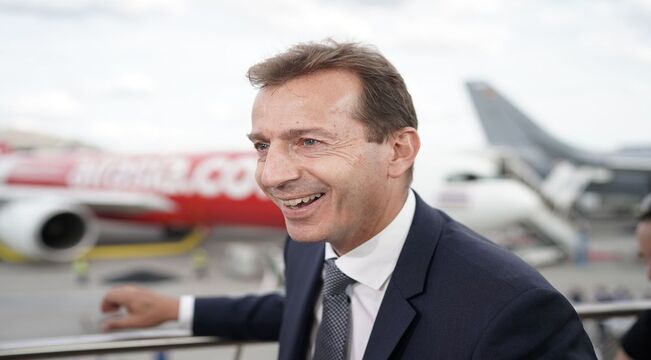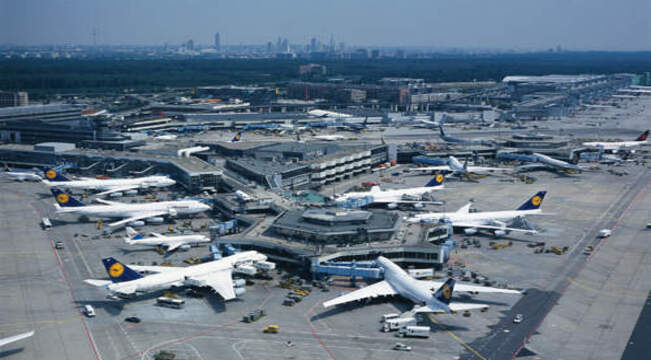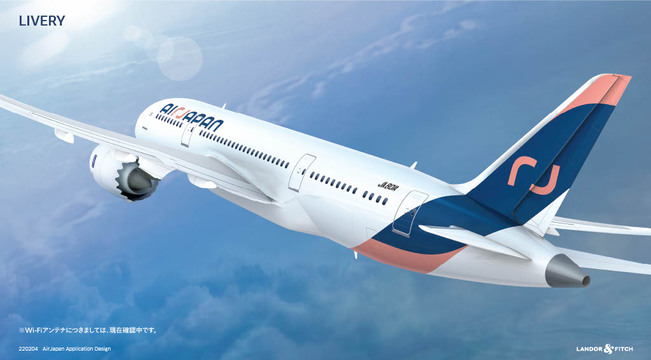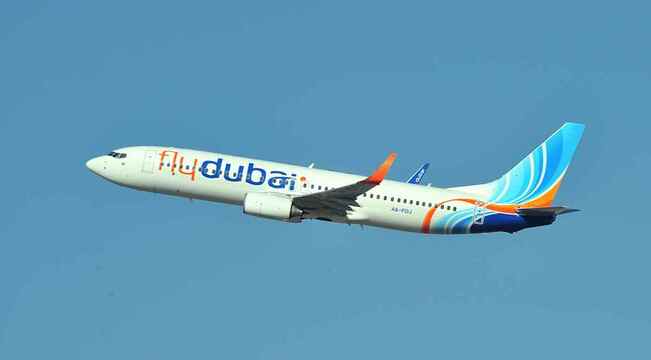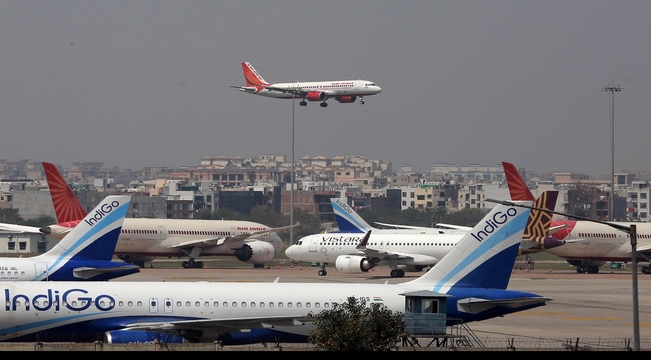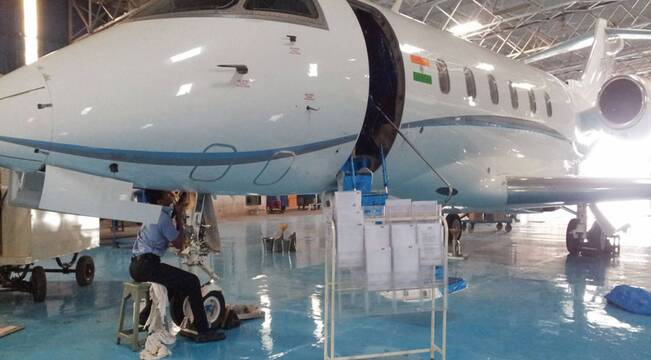New Delhi, February 26, 2021: Every morning, Airbus SE Chief Executive Officer Guillaume Faury scans global air traffic data before checking in with carriers, suppliers, and the leasing companies that keep aircraft deliveries ticking along, even during a time of unprecedented crisis.
Although the numbers make for grim reading, this meticulous approach has given Faury an unvarnished view of the aviation industry and the contours of life after the pandemic. This much is clear: Travel patterns have changed fundamentally, and so will aircraft requirements. The biggest planes serving long routes will be the last to return to the skies as carriers favor shorter trips with small aircraft that are nimble and fuel-efficient. Those trends could favor Airbus, which keeps expanding its popular A320 family of jetliners and is considering a hydrogen-powered model for smaller distances by 2035.
Archrival Boeing Co. remains restrained by the recent grounding of its top-selling 737 Max following two deadly crashes and production flaws with another cash cow, the 787 Dreamliner. It’s also trying to introduce a massive widebody airliner, the 777X, which is three years late. Airline customers have cooled on big aircraft they’ll probably struggle to fill, particularly with business travel likely to remain subdued for years.
“We’re quite lucky that the change coming from the pandemic is fitting with today’s product lineup,” Faury says, referring to Airbus’s stable of jets.
The Airbus-Boeing rivalry has long been about the first-mover’s advantage and the other side’s comeback. But the courses of the two players in the global plane-making duopoly have diverged in recent years, and the split has only deepened in the pandemic.
Both companies need to make decisions in the next few years that stand to shape the competition well into the next decade and beyond, yet they’re doing so from very different starting positions. Boeing can’t afford another misstep after one of the worst periods in its history. Airbus is generating cash again after a flurry of late plane deliveries last year. When Covid-19 struck in 2020, Airbus held $16 billion in cash and equivalents, vs. $10 billion at Boeing. One reason: Airbus kept its financial powder dry while Boeing shoveled about $40 billion back to shareholders via stock buybacks in the years before the crisis. That’s given Airbus an advantage, particularly in the market for single-aisle planes, the backbone of the civil aviation industry.
The coming Airbus A321XLR, a long-distance single-aisle model due in 2023, is already eating into orders of larger planes—and Boeing has no response. While it pours resources into getting the Max airborne again and services its $65 billion debt, Airbus is investing in designs that stand to redefine air travel. “You could say you make your own luck,” says Robert Stallard, an analyst at Vertical Research Partners. “It was a very deliberate decision [for Airbus] to not spend that money, save it for a rainy day—and it came.”
Boeing CEO Dave Calhoun has hinted his company could introduce its response to the A321 within a year or two. A small team of engineers has continued to work on future aircraft, according to people familiar with the matter, including concepts for single-aisle jets that seat 200 travelers with the range to cruise the North Atlantic. It’s a niche where Airbus’s largest narrowbody jet is racking up sales unchallenged by Boeing according to the reports published in bloomberg.com.
Boeing is taking a straightforward approach to making its fleet more environmentally friendly: looking at advanced composites to lighten the weight of the wings and fuselage and at engines that would run on sustainable fuels instead of kerosene. Airbus could counter with such incremental improvements, but it’s chosen to develop a totally new aircraft it aims to introduce by 2035 that’s based on hydrogen propulsion, a so-far unproven technology. A hydrogen turboprop plane is gaining momentum internally, according to people familiar with Airbus’s thinking who asked not to be identified because the plans are confidential. The propeller plane would carry 100 passengers and have a range of 1,000 nautical miles—about the distance from Rome to Dublin.
The hurdles to Airbus’s plan are significant. It needs to develop a massive global infrastructure for storing hydrogen at airports and fueling aircraft while figuring out how to make it affordable enough for airlines to switch from conventional jet fuel. Airbus’s development timetable means it has only seven or eight years to bring an entire ecosystem into being, and there’s no shortage of skeptics. “I don’t think we’re anywhere close to having hydrogen or electric power anytime soon on the mainstream aircraft, but I do know Airbus is working on these concepts very meaningfully,” says John Plueger, CEO of aircraft financier Air Lease Corp. He says Boeing’s approach represents “a much easier step.”
The Boeing CEO has called out his rival’s strategy, without mentioning Airbus by name. Boeing studied hydrogen and determined it wouldn’t be ready for decades, Calhoun said on a call with analysts in January.
Faury points to Airbus’s pioneering role bringing so-called fly-by-wire technology to civil aircraft cockpits in the 1980s. The system, which steers a plane using an electronic interface rather than heavier hydraulic links, was first deployed on the A320 family. “Fly-by-wire was seen as risky or too innovative,” Faury says. “Thirty years later it’s an absolute must. We have to be very careful with the ‘it will never work’ attitude, which has proven so many times to be wrong in so many industries.”
Boeing is under particular pressure to defend itself in the longer-haul single-aisle jet market that the A321XLR is targeting. The Airbus model has already racked up more than 450 orders from two dozen customers, including U.S. carriers American, JetBlue, and United.
Any misstep by Boeing or Airbus could also leave space for China to get into the market. Chinese aircraft manufacturer Comac has developed a narrowbody jetliner called the C919 intended to compete with the 737 Max and the A320neo. The company plans to make its first delivery of the aircraft by the end of the year, and that could undercut sales for Airbus and Boeing in the important Chinese market.
It’s uncertain whether China will emerge as a credible threat, but there’s still plenty of time for it to make its move. Given that aircraft have among the longest life cycles of any industrial product, the next battle for dominance will likely be waged a decade from now. “It’s a 10-year-long chess game,” says Vertical Research Partners’ Stallard. “You make a move, and 10 years later it plays out.”









